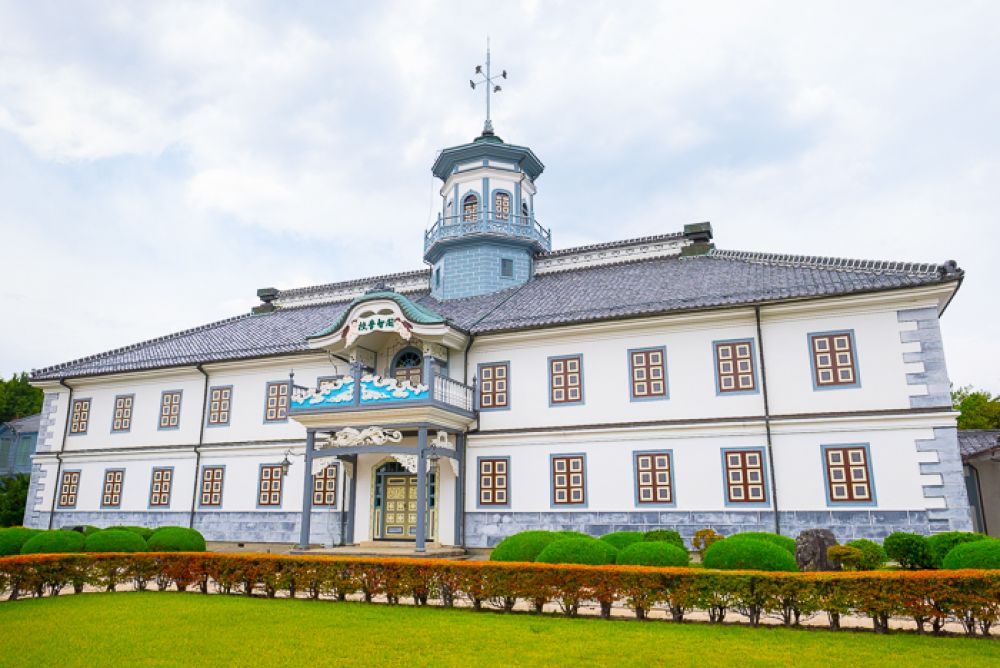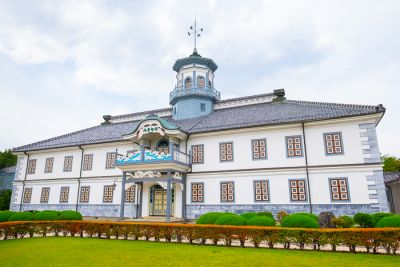

Kaichi Gakko Primary School offers a traditional origami class aimed at celebrating and preserving the ancient art of Japanese paper folding. The class is designed for students to learn the intricate craft from expert instructors who guide them step by step to create various traditional designs such as cranes, flowers, and samurai helmets. Throughout the duration of the class, learners delve into the history and cultural significance of origami, exploring how each fold is imbued with meaning and how the practice has been handed down through generations. Students are also encouraged to harness their creativity and patience, as origami is not only an art form but also a way to improve fine motor skills and concentration. The course culminates in a mini-exhibition where participants can showcase their handmade creations to their peers and family members.
Kaichi Gakko Primary School's Introduction to Japanese Calligraphy, or 'Shodo,' is a program designed to immerse students in the world of brush and ink. Calligraphy is a highly respected art form in Japan, and this class offers children the opportunity to grasp the basics under the guidance of a skilled calligrapher. Students learn about the different brush strokes and the significance behind each character they draw. Emphasis is placed on the flow and balance that is essential to this discipline, with each stroke representing a harmonious blend of strength and grace. Through this meditative art, students not only come away with an appreciation for a key aspect of Japanese culture but also improve their attention to detail and develop a sense of mindfulness. Each lesson is a step towards creating their personal piece of calligraphy, which encapsulates their learning journey.
The Kendo Introduction Workshop offered by Kaichi Gakko Primary School presents students with the fundamentals of this modern Japanese martial art, which descends from traditional swordsmanship. Kendo, meaning 'The Way of The Sword', provides participants with an understanding of both the physical and spiritual aspects of the art. Students don protective bamboo armor, learn the etiquette and stances, and practice basic strikes and thrusts with bamboo swords (shinai). The aim of the workshop is to cultivate discipline, respect, and perseverance. As students engage in sparring exercises, they not only learn self-defense techniques but also develop their character, confidence, and respect for their peers. The workshop is supervised by experienced practitioners, ensuring a safe and educational environment for all participants.
The Japanese Tea Ceremony Experience at Kaichi Gakko Primary School introduces students to the serene world of 'Chanoyu' or 'Sado', the Way of Tea. This traditional cultural activity is more than just drinking tea; it is a choreographed ritual of preparing and serving Japanese green tea, known as 'Matcha', together with traditional Japanese sweets to balance its flavor. Students learn about the meticulous process, the aesthetics, and the philosophy behind each movement and utensil involved in the ceremony. Throughout the experience, emphasis is put on 'wa-kei-sei-jaku' (harmony, respect, purity, and tranquility), encouraging students to cultivate these ideals in their daily lives. It is a hands-on activity that promotes social interaction and a moment of reflection in the midst of their busy academic schedule.
Kaichi Gakko Primary School's Rice Planting Cultural Exchange program is an outdoor activity designed to give students a real-life experience of traditional Japanese agriculture. Rice is a staple of Japanese cuisine, and this activity educates children on its importance while engaging them in the process of cultivation. Students venture into the fields, experience the manual planting of rice seedlings, and gain insights into the seasonal cycles that influence farming in Japan. Throughout the planting exercise, discussions on sustainability and the significance of rice in Japanese culture take place, providing an environmental conscience and an appreciation for the country's agricultural heritage. Each participant plays a hands-on role in growing a crop that is vital to the community, thereby understanding the value of hard work and teamwork in nurturing something from seed to table.
The Kimono Dressing and Cultural Awareness session is one of Kaichi Gakko Primary School's activities designed to immerse students in traditional Japanese attire. The kimono, with its straight lines and myriad designs, is not merely clothing but a canvas portraying the beauty of Japanese aesthetics. Students are taught the correct way to wear a kimono, learning about different fabrics, patterns, and the meanings behind various styles suited for occasions throughout the year. In addition, they discover the historical evolution of the kimono and its role in contemporary society. This activity offers students a tactile exploration of their cultural heritage, instilling pride and knowledge about the craftsmanship and etiquette associated with this iconic Japanese garment.
Kaichi Gakoo Primary School's Local History Storytelling session is a captivating journey into the past, showcasing the rich heritage of Matsumoto and the surrounding areas. In this engaging activity, students gather to hear tales and legends that have been passed down through generations, illuminating the historical significance of their hometown. Storytellers, often adorned in traditional attire, bring to life the events and characters that have shaped the region. Coupled with visual aids and historical artifacts, these narratives foster a deep understanding and appreciation of local history. Students are not only listeners but also participants, as they are encouraged to act out parts of the stories, ask questions, and discuss the moral and cultural lessons embedded within these folktales. The storytelling sessions help preserve the oral history of the community while building a sense of identity and belonging among the young learners.
Kaichi Gakko Primary School organizes Seasonal Nature Walks for students to explore and appreciate the changing landscapes around Matsumoto. As Japan is known for its distinct four seasons, each walk is a unique occasion to observe the flora and fauna as they transform through the year. During these guided walks, students learn about local wildlife, native plants, and how to respect and conserve the natural environment. Educational tasks such as leaf collection, insect observation, and birdwatching are included to enhance the hands-on learning experience. The nature walks encourage curiosity and foster a connection with the outdoors, offering a refreshing break from the structured classroom setting. This activity highlights the beauty of each season, whether it be the cherry blossoms of spring, the lush greenery of summer, the vibrant reds, and oranges of autumn, or the pristine snowscapes of winter.
Kaichi Gakko Primary School's Haiku Poetry Writing activity is a literary dive into the art of haiku, a traditional form of Japanese poetry that captures the essence of a moment in just three short lines. Students are introduced to the classic 5-7-5 syllable structure of haiku and the thematic importance of nature and the seasons in the poem's content. The class discusses famous Japanese haiku poets such as Matsuo Bash? and their contribution to the craft. Students are then guided to compose their own haiku, encouraged to draw inspiration from personal observations or from the nature walks and other cultural activities they've experienced. This exercise in brevity and expression not only improves their linguistic skills but also promotes a deeper connection with the cultural and natural world.
Students at Kaichi Gakko Primary School have the opportunity to immerse themselves in traditional Japanese performing arts through the Folk Music and Dance Workshop. The workshop introduces the children to folk songs that have been sung for centuries, as well as the dances that accompany them. Instruments such as shamisen, taiko drums, and bamboo flutes are demonstrated, and in some cases, students may try playing them. The folk dances, often tied to festivals and seasons, are broken down into simple steps so that all can participate regardless of skill level. This vibrant and energetic activity is not only a fun way to get moving but also serves as a medium for understanding the cultural context of music and dance in Japanese society.
